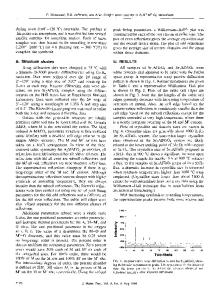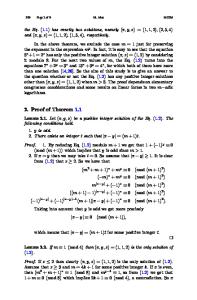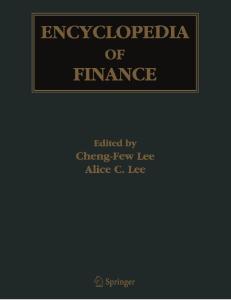Anisotropy of antiferromagnetic spin fluctuations in the heavy fermion superconductors of Ce M In 5 and Pu M Ga 5 ( M =C
- PDF / 1,552,447 Bytes
- 11 Pages / 612 x 792 pts (letter) Page_size
- 96 Downloads / 250 Views
1264-Z12-01
Anisotropy of antiferromagnetic spin fluctuations in the heavy fermion superconductors of CeMIn5 and PuMGa5 (M=Co, Rh) Hironori Sakai1,2, Shinsaku Kambe1, Yo Tokunaga1, Yoshinori Haga1, Seung –H. Baek2, Filip Ronning2, Eric D. Bauer2 and Joe. D. Thompson2 1 Advanced Science Research Center, Japan Atomic Energy Agency, Tokai, Ibaraki 319-1195, Japan. 2 Los Alamos National Laboratory, Los Alamos, NM 87545, U.S.A. ABSTRACT The anisotropy of antiferromagnetic spin fluctuations has been investigated microscopically in the heavy fermion systems of CeMIn5 and PuMGa5 (M=Co, Rh) by means of nuclear magnetic resonance (NMR). Both systems are known to be relatively high-Tc superconductors among the heavy fermion systems, especially PuCoGa5, which has a Tc=18.5 K almost one order of magnitude larger than for CeCoIn5 ( Tc=2.3 K). Analysis of the Knight shift and spin-lattice relaxation rates suggests XY-type anisotropy in the antiferromagnetic spin fluctuations in the normal states of these unconventional superconductors. Moreover, the 115 superconductors with larger XY-type fluctuations have a higher Tc, compared to the anisotropy of spin fluctuations in the related paramagnetic system UFeGa5 and antiferromagnets UPtGa5, NpCoGa5, NpFeGa5. INTRODUCTION The discovery of the plutonium superconductors PuCoGa5 and PuRhGa5 with transition temperatures Tc = 18.5 [1] and 8.5 K [2], respectively, generated a large amount of interest in the actinide-based An115 compounds AnMGa5 (An = U, Np, Pu; M = transition metal elements). The An115 compounds crystallize in the tetragonal HoCoGa5-type structure (space group
Figure 1. Crystal Structure of AnMGa5 (An115) compounds (An =U, Np, Pu; M=Transition metal atom) with tetragonal HoCoGa5-type structure.
P4/mmm), illustrated in Fig. 1. This crystal structure is quasi-two-dimensional in character, i.e., can be regarded as a sequential stacking of AnGa3 and MGa2 layers along the c axis. An An atom is surrounded by four Ga(1) atoms with local tetragonal symmetry and 8 Ga(2) with local orthorhombic symmetry. The isostructural cerium-based series CeMIn5 (M = Co, Rh, Ir), or Ce115 systems, have been studied more extensively, since they are heavy fermion superconductors. The Tc values for CeCoIn5 and CeIrIn5 are 2.3 K [3] and 0.4 K [4], respectively. CeRhIn5 is an antiferromagnet with an antiferromagnetic (AFM) transition temperature TN=3.8 K at ambient pressure and becomes superconducting below 2.5 K, close to the suppression of AFM order, under applied pressure of P*~2 GPa [5]. Systematic nuclear magnetic resonance (NMR) investigations of the Ce115 systems have established that these superconductors have dwave superconducting gaps [6-9] and that AFM spin fluctuations play an active role in the superconducting pairing. In the Pu115 systems, NMR measurements have yielded d-wave-like superconducting gap behavior [10, 11], while Tc values are an order of magnitude higher than those for the Ce115. On the other hand, in the U115 and Np115 series, which are Pauli paramagnets or antiferromagnet
Data Loading...











